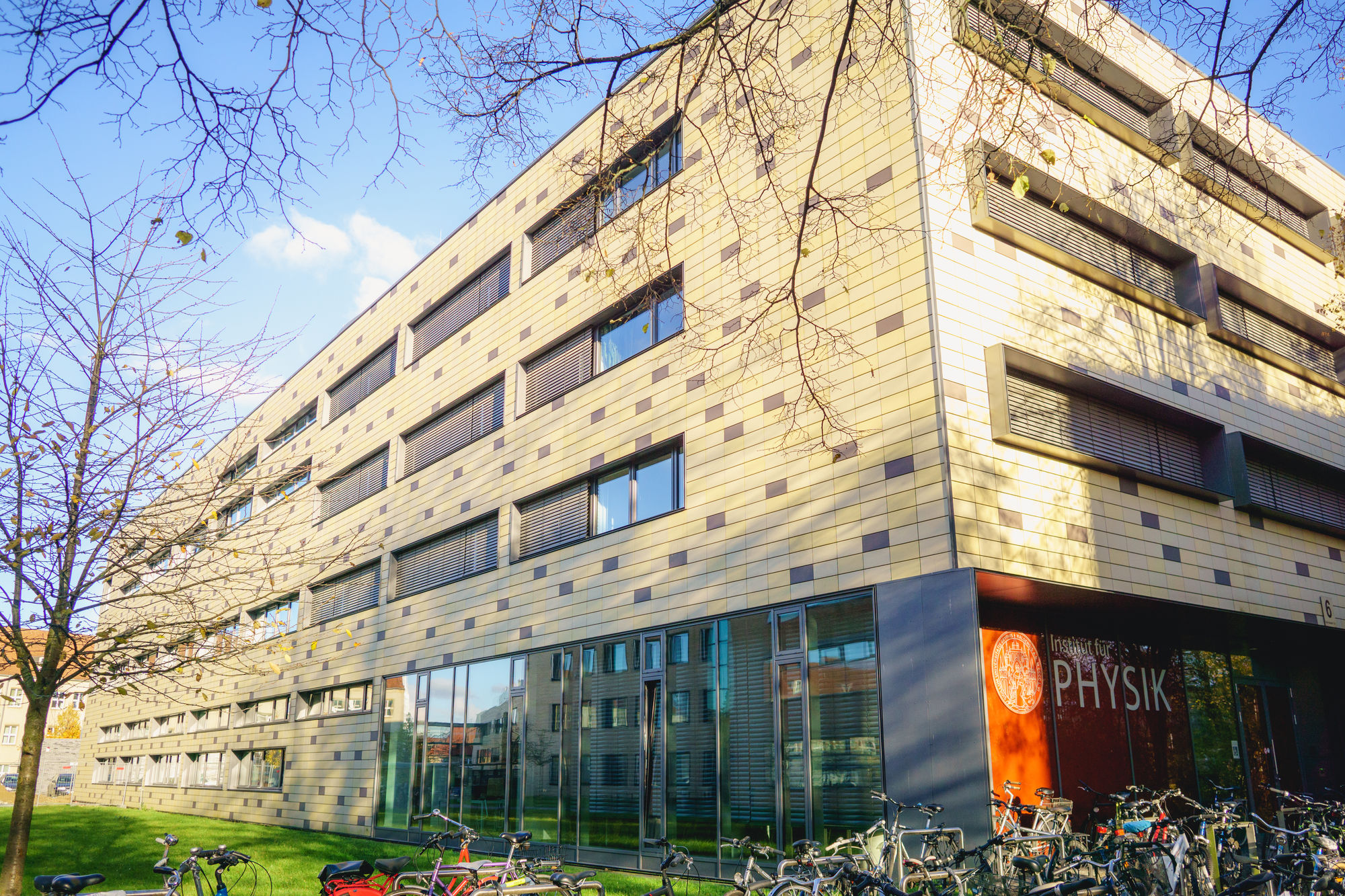Atomic clusters are found between single atoms and solids. Their properties differ from both and depend on their size. Physical properties can change smoothly – and sometimes suddenly – with increasing numbers of atoms, which is a subject of ongoing research. Dr. Fischer has investigated the size dependence of properties of bismuth and indium clusters with novel techniques of multi-reflection time-of-flight mass spectrometry. The experiments constitute the first realisation of tandem multi-reflection time-of-flight mass spectrometry, in which two spectrometry stages are combined in sequence: First, the mass spectrometer is used to select clusters according to their size; then, reaction products are analysed following laser excitation.
‘In a first series of measurements, Dr. Fischer determined the dissociation behaviour of bismuth clusters as a function of the product size. He then ‘doped’ the clusters with lead, meaning a single lead atom was attached to the bismuth clusters. The interesting question was which bismuth fragments would retain the lead atom upon dissociation. Both steps, the cluster selection and reaction-product analysis, were performed with multi-reflection to attain a high mass-resolving power. In a subsequent experiment, Dr. Fischer studied the time-resolved dissociation of indium clusters to gain insight into the conditions of their production through the laser irradiation of a target surface. The details of cluster production are still subject of ongoing research,’ reports Prof. Dr. Lutz Schweikhard, head of the Atomic and Molecular Physics Group at the University of Greifswald.
Mass spectrometry (MS) is a prevalent experimental technique, providing insight into the composition and bond structures of molecules and atomic clusters. In time-of-flight mass spectrometry (ToF MS), ions – charged atoms and molecules – are accelerated to identical kinetic energies through an electric field regardless of their mass. They are then sent, like cars on a racetrack, from the source towards a detector inside a vacuum chamber. Lighter ions arrive earlier than heavier ones, with their flight times also being influenced by their charge state. The detector registers the flight times of the ions of different masses to form a time-of-flight spectrum in which individual species can be identified. Longer flight paths between source and detector lead to larger differences in the flight times of different ions and, thus, better conditions to differentiate between species: The ‘mass resolving power’ increases with longer flight times.
To allow ions to travel long distances even in a laboratory environment, in Greifswald’s setup, they are reflected back and forth several thousand times between ion-optical mirrors. This ‘multi-reflection’ (MR) is comparable to a game of ‘ion ping-pong’, increasing the length of their flight path from one metre to several kilometres and the mass resolving power to values of several hundred thousand. Additionally, the MR-ToF mass spectrometer can be used as an ion trap, making it possible to track the decay of the clusters over their laps between the mirrors. Thus, cluster dissociations can be investigated in a time-resolved fashion – as the present research demonstrates – enabling further conclusions about the particles’ properties.
The MR-ToF mass spectrometer is one of several that have been developed and built at the University of Greifswald. More specifically, it is based on the experience from an instrument delivered to the precision mass spectrometer ISOLTRAP at the European research facility CERN. The instrument at CERN is used for the detection and selection of exotic nuclei and the determination of their binding energies.
Further Information
Atomic and Molecular Physics Group at the University of Greifswald’s Institute of Physics
Similar press releases
(a) concerning atomic clusters
Subnano lead particles show peculiar decay behavior https://idw-online.de/en/news693212
(b) concerning CERN experiments
Laboratory Mass Measurement deepens Insight into Neutron Star Crusts https://idw-online.de/en/news516628
Ion ping pong reveals forces in atomic nuclei https://idw-online.de/en/news539611
On the way to heavy elements – short-lived cadmium isotopes in the trap https://idw-online.de/en/news643335
Unique Behaviour of Mercury Nuclei Finally Explained https://idw-online.de/en/news703453
Peer-reviewed publications
Fischer P., Schweikhard L. (2020): ‘Decay-rate power-law exponent as link between dissociation energy and temperature’ in: Physical Review Research. 2, 043177, https://link.aps.org/doi/10.1103/PhysRevResearch.2.043177
Fischer P., Schweikhard L. (2019): ‘Isotope-resolved photodissociation pathways of lead-doped bismuth clusters from tandem multi-reflection time-of-flight mass spectrometry’ in: Physical Review Research. 1, 033050, https://doi.org/10.1103/PhysRevResearch.1.033050
Fischer P., Schweikhard L. (2019): ‘Photofragmentation of Bin+/- clusters (n = 2-19) in an electrostatic ion beam trap’ in: The European Physical Journal: Atomic, Molecular, Optical, and plasma Physics. D 73, 105, https://doi.org/10.1140/epjd/e2019-100027-0
Contacts at the University of Greifswald
Dr. Paul Fischer and Prof. Dr. Lutz Schweikhard
Institute of Physics
Felix-Hausdorff-Straße 6, 17489 Greifswald
Tel.: +49 3834 420 4700
lschweikphysik.uni-greifswaldde

